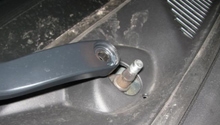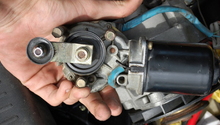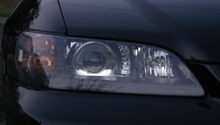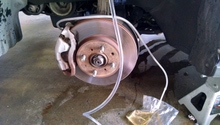Honda Accord: Why is My Windshield Sprayer Clogged?
A number of reasons account for a clogged windshield sprayer. Find out the possible culprits here.
This article applies to the Honda Accord (1990-2002).
At the sight of a broken (or poorly functioning part), your first thought might be to visit the dealer or a local mechanic for service work. However, doing so might not always be necessary. Common everyday wear that causes parts to become damaged are usually quite easy to repair, assuming the part does not have cracks or other structural damage. If your windshield sprayer becomes clogged or doesn't spray a nice stream of liquid each time, don't panic. The solution may be easier than you think!

Materials Needed
- Windshield washer fluid
- Funnel (optional)
- Fuse
- Fuse puller or tweezers
- Long wire pin or sewing needle
- Garden hose or a can of compressed air
Step 1 – Check the fluid reservoir level
The fluid reservoir might be empty. While the fluids in your Honda Accord are usually topped off when you visit the dealer or a local mechanic for service work, it's possible that the fluid was not added to the windshield sprayer reservoir. If you don't check yourself, waiting long periods of time for the recommended maintenance can also cause the fluid levels to deplete.
- Top off the reservoir with premium windshield washer fluid, which is available at any auto part stores. It is also available in national retailer stores like Target and Walmart. Stop before the fill line to avoid wasting the fluid.
- Check that the lines from the fluid reservoir to the sprayer nozzle (atop the hood) are properly connected.
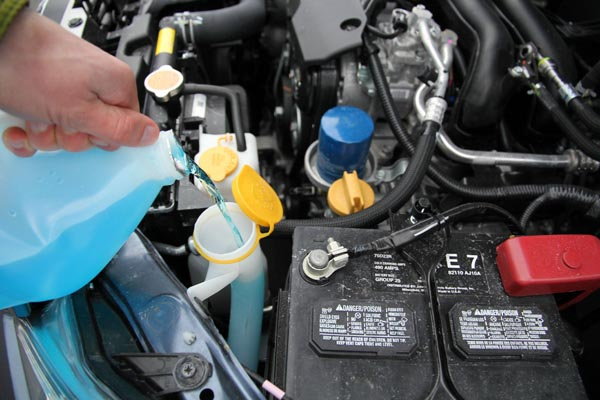
Pro Tip
You may want to use a funnel to pour in the windshield wiper fluid. This will minimize accidental spills.
Step 2 – Check the fuse panel
The fuse that protects the washer system in your Honda Accord could be blown. What you thought was a "clogged" windshield sprayer could actually be an inactive washer pump caused by a blown fuse.
- Pop the hood of your vehicle, and check the fuse panel for a blown fuse. If the metal link inside is separated, then the fuse is blown.
- Remove the blown fuse using a fuse puller (or tweezers), and replace with a new fuse of equal amperage.

Pro Tip
If the fuses are not clearly marked, check your owner's manual for a diagram of the fuse panel.
(Related Article: Accord Fuse Box Diagram - Honda-Tech.com)
Step 3 – Remove dirt and debris
It might be clogged with dirt, sludge, or debris, which is commonly caused by rainfall.
- Using a long wire pin or sewing needle, remove any trapped dirt and debris from the sprayer nozzle.
- Rinse the nozzles with warm, soapy water, and repeat until the nozzle is cleared of any dirt.
- Blast the dirt off using a garden hose or a can of compressed air. Then, simply direct the high pressure air against the washer, and blast away trapped dirt or gunk. Do this the same way you would blast off debris in electrical parts.
- Remove the hose connected to the sprayer to blow compressed air through the tube and out the nozzle.

Pro Tip
If the windshield sprayer is still clogged, you might want to invest in a new one rather than visit the dealer or a local mechanic. Replace as directed by the manufacturer.
Featured Video: Clogged Windshield Spray Nozzle Repair
Related Discussions
- Accord Windshield Fluid Sprayer - Honda-Tech.com
- Accord Washer Fluid Hose - Honda-Tech.com

